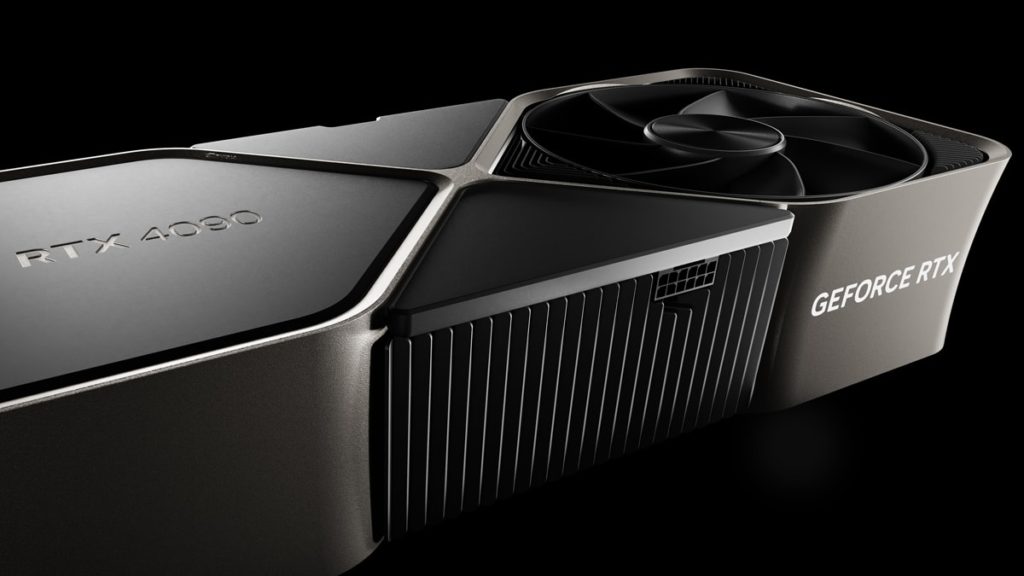
According to a new report on the upcoming CEM 5.1 specification update, the now infamous 12VHPWR connector will reportedly be retired. To be clearer, while the 12VHPWR connector may continue to exist for other applications it could be getting updated on the PC front to what is presently being called a 12V-2×6 connector. Now before anyone starts jumping for joy and planning their next GPU upgrade after sitting on the sidelines while the current drama of the 12VHPWR connector unfolds, folks should pay close attention to the proposed improvements to better understand what could be forthcoming.
Per an exclusive report by Igor Wallossek, who was granted access to the PCI-SIG PCIe Base 6.0 documents, the new 12V-2×6 connector is essentially a slightly revamped 12VHPWR connector with a number of subtle changes. The new connector raises the maximum power rating from 600 W to 675 W, both of which include power to the motherboard. The shape is mostly the same thus presumably allowing some measure of backward compatibility. The old connector is designated by the “H+” on the top of the header while the new one has “H++”.
12VHPWR and 12V-2×6 Diagrams
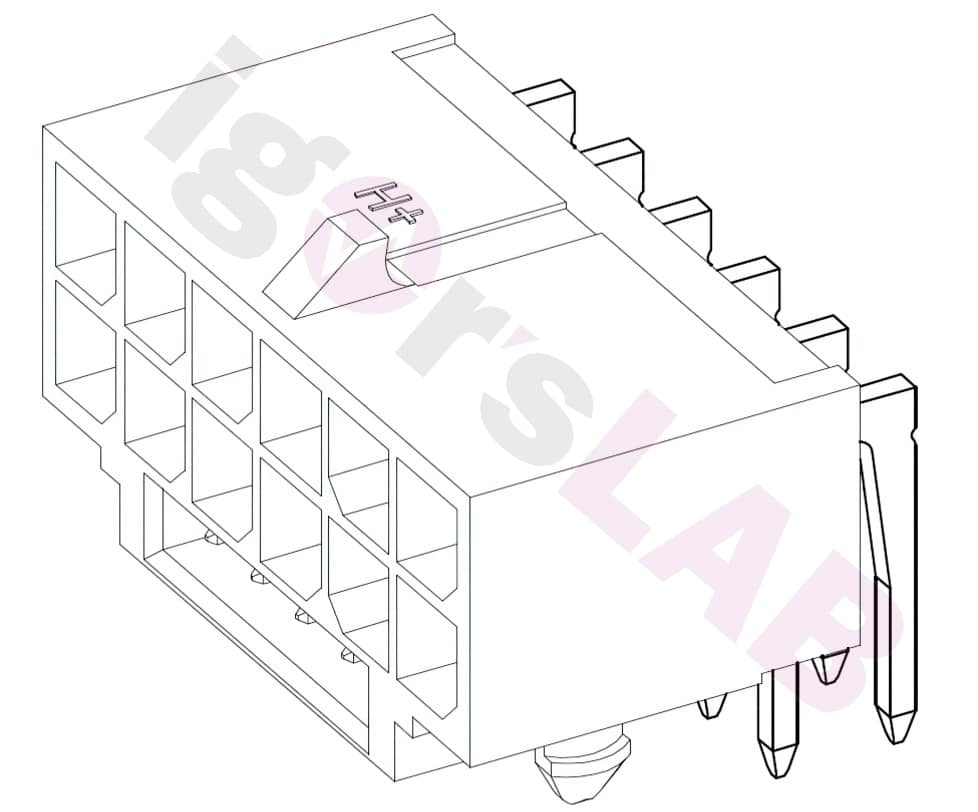
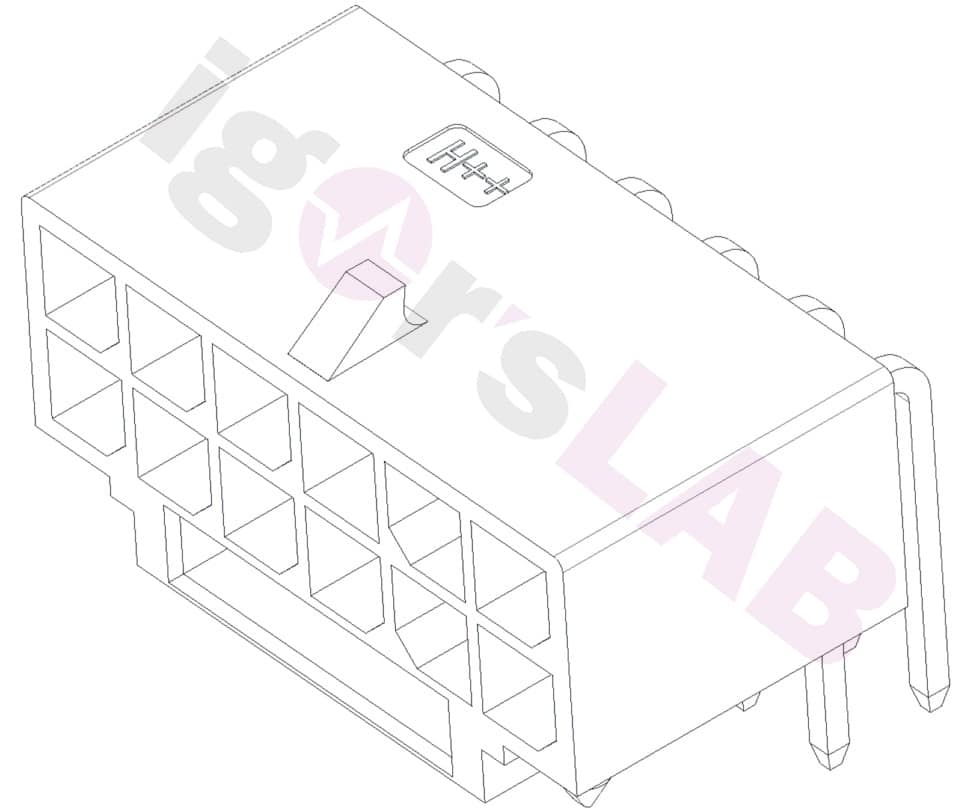
Per Igor’s Lab (translated by Google)
“The new 12V-2×6 power connector also provides up to 55 A of continuous current to power the expansion card with a maximum of 600 W on a 12 V aux rail. The power requirements for the connector and cable assembly are as follows:
- Current rating of current pins (sideband contacts excluded): Minimum 9.2 A per pin/position with a limit of 30 °C T-rise above ambient temperature conditions at 12 V dc with all twelve contacts activated.
- The connector body shall have a label or embossed H mark to indicate support of 9.2 A/pin or greater. See illustration above for approximate location of mark on 12V-2×6 Right Angle (R/A) header.
- Due to variations in contact resistance, a single pin may see more than 9.2A of current depending on uneven cable contact resistance, but the total current for the assembly must not exceed 55A RMS in either direction. This also addresses measurements and requirements for contact resistance variability.
- Cable assembly integrators must ensure that the assembly, including 16 AWG wires and pins, meets the minimum current requirement and maximum temperature rise as specified above for their implementation.
- Locked connector retention force: minimum 45.00 N when the connector is pulled axially“
New changes for the 12V-2×6 Connector
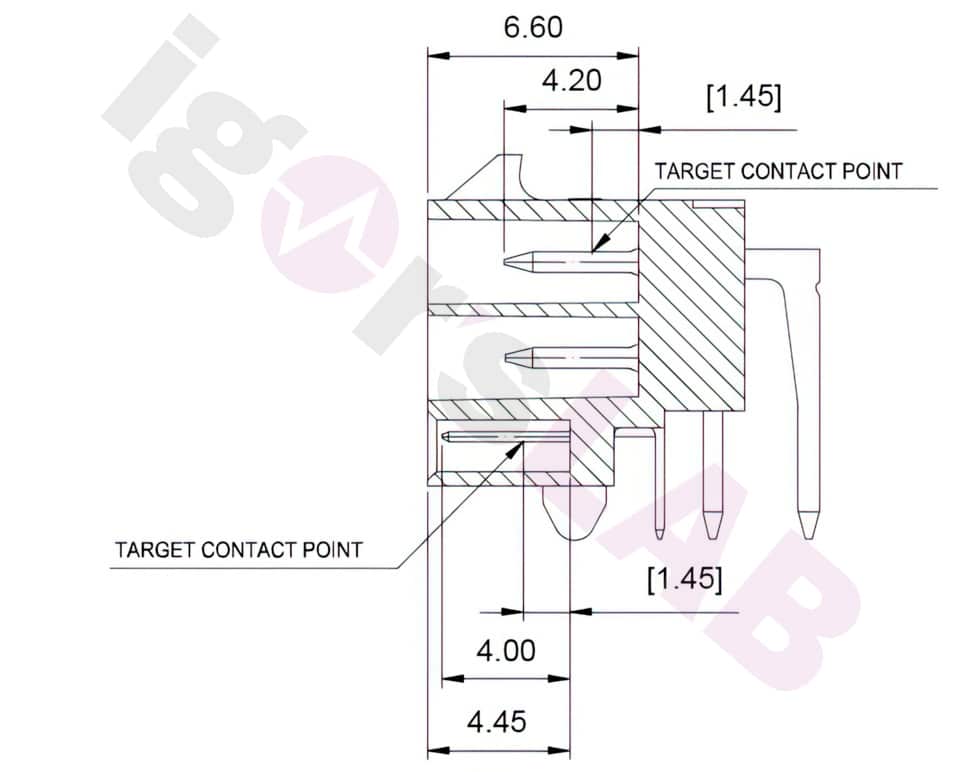
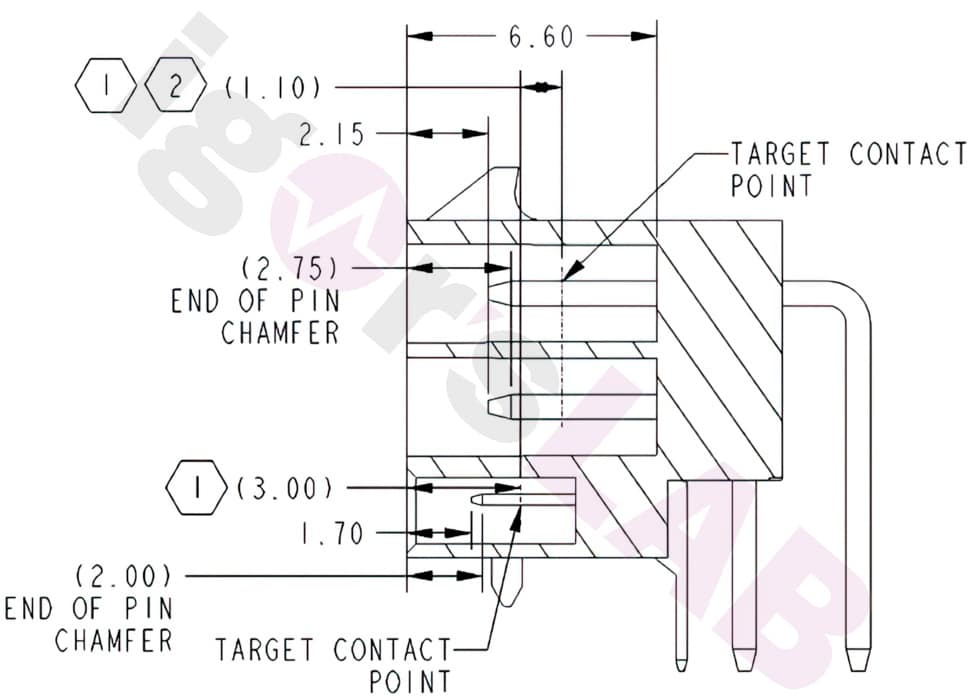
- The tips of the sense pins have been shortened by 1.25 mm to 1.7 mm. If the sense pins do not make full contact the card will not be allowed to power up or will be switched off if the tips cease to make contact.
- New 150 W and 300 W classes via pin 0, pin 1, and ground combinations. Igor notes this would require new cables or a new power supply. The sense pins would control these classes.
- The motherboard solder points have now been altered
- Power pins have a pitch of 3.0 mm and the contacts in a 2×3 and 2×4 connector have been increased to a larger pitch of 4.2 mm.
- Shunt Temperature life is 168 hours at 105 C
Other recommendations for new connectors
It is also suggested that a 0.7 mm “shoulder” at the bottom of the plug where the sense pins are could be an option. Igor was not able to obtain information as to why this option would be offered as its only obvious function would be to prevent the plug from being pushed in too far, something that has not typically been an issue for the current 12VHPWR connector. The spring connectors used in the plugs are expected to be officially recommended to be the NTK design, as recommended per revision 2.01 of ATX 3.0 specifications.
Another more formal recommendation will be that cable bundles should not be bent right after that plug. This is something that came up with the current 12VHPWR adapter after reports of melting connectors began surfacing. The IPC/WHMA-A-620 standard prescribes best practices for users and manufacturers alike in regard to cables, cable assembly, and requirements as well as standards for materials, testing, soldered connections, and appropriate assembly. Load balancing became a known issue with cables, and connectors when full contact is not made so these standards are expected to play a large role to prevent more such reports from users.
Igor, while happy that a number of items had finally been checked off for the new standard, is not entirely thrilled with it either. He notes a lack of information regarding the new 150 W and 300 W classes and is also quick to point out how some of these changes should’ve been implemented the first time around. He also points out that user error should not have been the go-to response as the previous specifications did not account for a design, that while sound on paper, did not account for all the usage scenarios, and challenges, that users would encounter with it.
Per Igor’s Lab (translated by Google):
“The changes presented today are not final yet, but very much will certainly not change. For the fraction of 6 2-pin lovers, however, the news that the new 12V 2×6 connection will also be specified for expansion cards up to 150 watts or up to 300 watts is certainly a disappointment. Otherwise? The resetting of the sense pins to detect a safe insertion should have been implemented in the first revision of the 12VHPWR connector. Also the missing specification of the lower watt classes and the now necessary rework in the software area are actually completely superfluous, it had been done right from the start.
Also, all the handling recommendations are a clear expression that the technology has its pitfalls if you don’t really install everything according to specification. In my opinion, the PCI SIG and all the companies involved are clearly to blame for the whole mess, and not the end user, who is supposedly too stupid. As the saying goes, many cooks spoil the broth, even if it’s just a plug connection. After all, the difficult thing is to make the supposedly simple as user-friendly as possible.“
